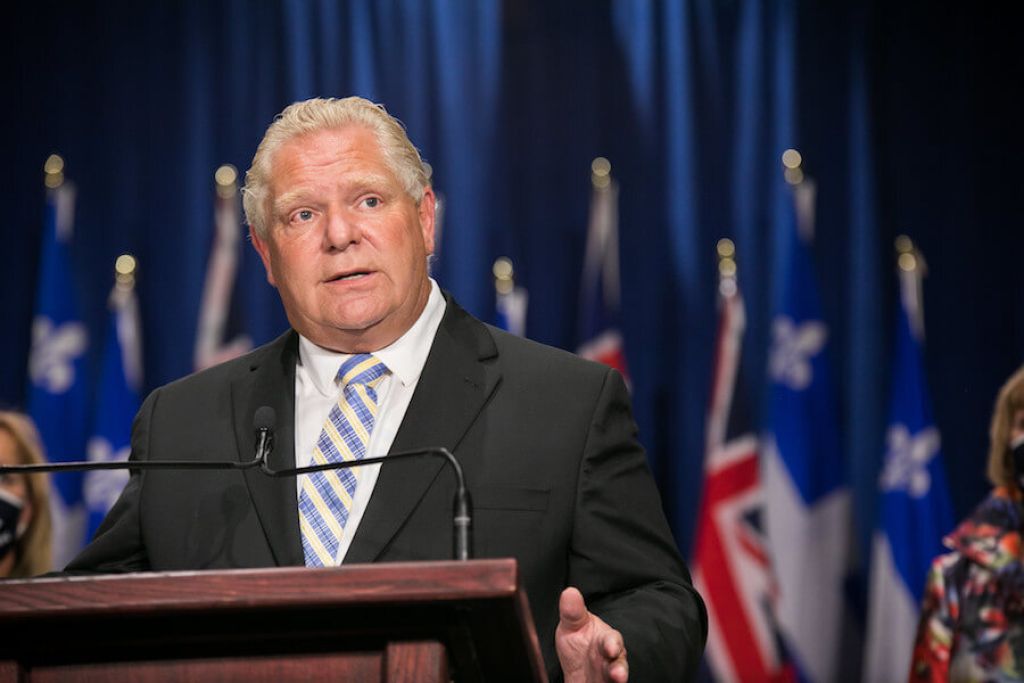The Ontario government released its annual fall fiscal update Thursday with dire warnings of an economic downturn and a sharply higher deficit.
By now most Ontario budget-watchers have learned to take provincial budget projections with a handful of salt. The deficit forecast, for starters, is pure accounting fiction.
The current government typically spends less than what it earmarks in its budgets and Finance Minister Peter Bethlenfalvy loves to pad his budgets with large “contingency funds” that aren’t earmarked for anything in particular. Case in point—back in March, the 2023-24 budget included $4 billion in contingency funds. Two-thirds of the way through the fiscal year, the province had only spent $336 million of it, meaning the contingency fund remained at $3.7 billion.
Then, on Thursday, the minister published his annual Economic Outlook and Fiscal Review, a.k.a. “the fall update.” In the update, the minister added another $2.5 billion to the contingency fund. After certain smallish new spending, “the Contingency Fund has a projected balance of $5.4 billion,” the statement reads.
This is separate from the $1 billion “reserve” fund that Ontario finance ministers have traditionally set aside to handle the unexpected.
This means that the provincial deficit—which Bethlenfalvy has pegged at $5.6 billion for 2023-24—is, for now, an accounting fiction. Will Ontario have a deficit in 2023-24? Maybe, maybe not. We will only see the final answer next year in the rear-view mirror.
For the moment though, it’s pretty clear that Ontario’s budget balance isn’t a major concern, even using the measures bankers like. The deficit, the debt-to-GDP ratio, and the percentage of revenues going to interest payments are all near 10-year lows.
Given the pressing needs of so many Ontarians today, now is a time to spend. That’s not what’s happening.
Thursday’s fall statement marks five years since former Finance Minister Finance Minister Vic Fedeli first started making adjustments to the Ontario budget following the June 2018 provincial election. Since then, we’ve seen a clear pattern in how the current government—through three finance ministers—views spending on public services and income supports.
The chart below shows the changes in program spending in Ontario over the last five years by major sector. The changes are adjusted for inflation and population growth, showing “real per capita” spending: how much the government is spending per person in Ontario in constant dollars in 2023-24, compared to 2018-19.
The results are astonishing. Real per-capita spending on post-secondary education has dropped by 11 per cent since 2018. In children’s and social services, it is down 12 per cent; in education, it is down 11 per cent; and, in the justice sector it is down by just over two per cent. Only in the health sector do we see any increase at all, and that is a mere 2.9 per cent.
Anyone who has been in an emergency department, if they were lucky enough to find an open one, anyone living in a long-term care facility or has a loved one in one, anyone who has needed health care in Ontario—anyone knows that such a paltry increase over five years is insufficient.
Part of the reason for that is that Ontario’s population is aging. Part of it is that the pandemic exposed and exacerbated the weaknesses of a long-underfunded system. And part of it is that Ontario’s per capita spending on health has been below the Canadian average for a long, long time.
In health and in all sectors, the slow suffocation of public services has gone on for too long. It is time for government spending to catch up with the needs of Ontarians—spending that invests in the public services that all of us rely on.
Instead, this government seems intent to hide behind dire fiscal projections rather than face the music on badly needed public service improvements.
Note: In the 2020-21 fiscal year, Employment Ontario was transferred from the Ministry of Training, Colleges and Universities to the Ministry of Labour. For accurate comparison, Employment Ontario is not included in the 2018-19 totals for the post-secondary education sector.









